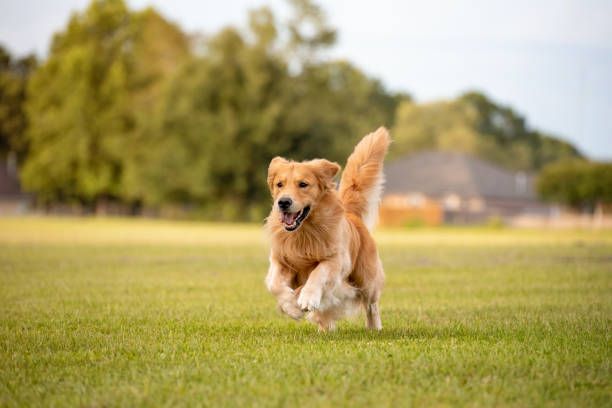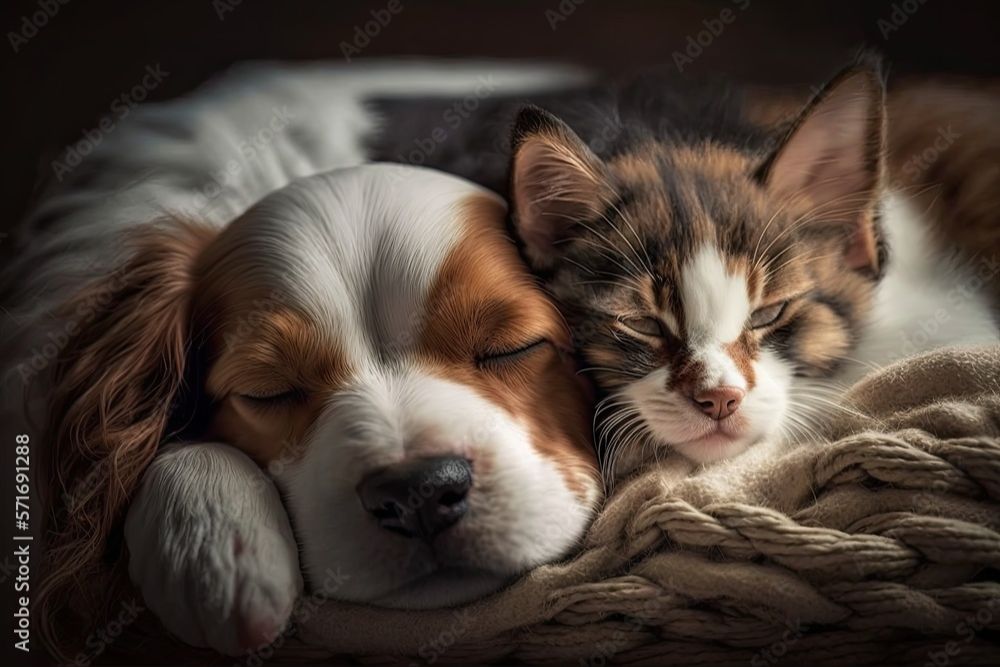Introduction
Mammals are a class of vertebrate animals that are characterized by several key features. Some of the main characteristics that define mammals include:
- Having hair or fur – Mammals are covered in hair, which helps regulate body temperature.
- Being warm-blooded – Mammals are able to maintain a constant internal body temperature.
- Giving birth to live young – Mammals do not lay eggs, they nourish their young through pregnancy and birth.
- Producing milk – Female mammals produce milk from mammary glands to feed their young.
- Having a neocortex region in the brain – The neocortex allows advanced cognitive functions.
- Having single-boned lower jaws – Mammals have three middle ear bones.
- Having specialized teeth – Mammals have different types of teeth suited for various diets.

There are around 6,400 known species of mammals that inhabit all types of environments and ecological niches around the world. Mammals range greatly in size from tiny bumblebee bats to enormous blue whales.
Dogs are Mammals
Dogs belong to the mammalian class of animals. Mammals are characterized by certain features like having fur or hair, being warm-blooded, giving birth to live young ones instead of laying eggs, and feeding milk to their offspring. Dogs exhibit all of these features, confirming their status as mammals.
Dogs have coats made up of fur which helps insulate them and regulate body temperature. The fur grows from follicles in the skin and sheds seasonally. Dogs are also warm-blooded, meaning they can maintain a constant internal body temperature regardless of external temperatures. Female dogs carry puppies in their womb and give birth to live young after a gestation period. Once born, puppies are nursed by their mother through milk produced in mammary glands. Puppies are completely dependent on their mother’s milk for the first few weeks of life. These biological attributes clearly demonstrate that dogs are mammals.[1]
In addition to physical traits, dogs share other mammalian behaviors as well. They are highly social animals that live in groups and communicate verbally and through body language. Mammals also care for their young, and dogs exhibit strong motherly instincts and relationships with their offspring. From both anatomical and behavioral standpoints, there is no doubt dogs are classified under the mammalian class.
[1] https://a-z-animals.com/blog/are-dogs-mammals/
Cats are Mammals
Cats belong to the biological class Mammalia, which means they have many characteristics that define them as mammals:
- Cats have fur or hair that covers their body (with the exception of hairless breeds like the Sphynx)
- Cats are warm-blooded, meaning they can regulate their own body temperature
- Cats give birth to live young rather than laying eggs. Kittens are born after a gestation period of around 63-67 days.
- Female cats have mammary glands that produce milk to feed their young
- Cats have a four-chambered heart, a large brain, and a diaphragm that allows for breathing
- Cats have specialized teeth, including sharp canine teeth, that allow them to eat different types of food

Some other traits that classify cats as mammals include having a vertebral column, three middle ear bones, and a neocortex region in their brain.
In summary, cats share all the major characteristics that biologists use to define mammals, making them a highly evolved mammalian species.
Mammal Classification
Mammals are classified into different groups based on their physical characteristics and evolutionary ancestry. Some of the main groups mammals get classified into include:
- Rodents – This is the largest group of mammals including mice, rats, squirrels, porcupines, beavers, and others. They are characterized by having continuously growing incisors and most have a herbivorous diet.
- Carnivores – Examples include cats, dogs, bears, raccoons, and others that primarily eat meat. They have specialized teeth suited for catching and consuming prey.
- Primates – Humans are part of this group along with apes, monkeys, lemurs, and others. Primates have advanced cognitive abilities, grasping hands, and forward-facing eyes.
- Ungulates – Hooved mammals like cattle, deer, horses, pigs, and hippos belong in this group. They evolved hooves and the ability to run fast.
- Cetaceans – Whales, dolphins and porpoises belong to this marine mammal group. They are specially adapted for an aquatic lifestyle.
Mammal species that don’t fit into the major groups are classified based on their specialized traits. For example, bats are put in their own group due to their ability to fly. Taxonomists analyze anatomical, genetic and fossil evidence to determine how to best classify mammal groups and species.
Dogs are Carnivores
Dogs are classified as carnivores based on their natural diet and anatomical features. Carnivores primarily eat meat, organs, and bones of other animals. Dogs have sharp, pointed teeth designed for tearing meat, rather than flat teeth for grinding plant material. Their digestive systems are shorter and more acidic compared to herbivores, allowing them to break down animal proteins and fats. Research shows that over time dogs have evolved to derive most of their energy from animal-based proteins and fats. While dogs can eat some plant materials, meat makes up the majority of their natural diet in the wild.
In addition to their teeth and digestive system, dogs have other anatomical adaptations for hunting prey, such as speed, agility, powerful jaws, and keen senses of smell and hearing. Their behavior reflects their carnivorous nature as well, including their tendencies to chase small moving objects, search for hidden food, and dig in the dirt. Overall, the anatomy, physiology, and behavior of dogs indicate they are well-adapted for a carnivorous lifestyle.
Cats are Carnivores
Cats are scientifically classified as obligate carnivores, meaning they rely almost exclusively on animal-based proteins as their primary source of nutrition. Vegetables, grains, fruits, and other plant-based foods simply do not provide cats with adequate amounts of essential nutrients like taurine, vitamin A, vitamin D, and others critical to their health and survival.
Cats’ bodies are specifically adapted for a meat-eating lifestyle. They have sharp, pointy teeth designed for grabbing prey and tearing meat. Their tongues have rear-facing barbs that aid in ripping flesh off bones. Cats also have an extremely short digestive tract compared to omnivores and herbivores, which allows them to pass meat through their systems very quickly before it putrefies. Their liver enzymes are specialized for breaking down animal proteins and fats.
According to experts at Texas A&M University’s College of Veterinary Medicine & Biomedical Sciences, “Cats are obligate carnivores, meaning they require meat in their diet and need animal-based proteins to survive” (Source). Cats’ bodies literally cannot adapt to vegan or vegetarian diets long-term without suffering health consequences.
Domesticated house cats retain all of these carnivorous adaptations. Even though they live alongside humans and may eat small quantities of plant material, their physiology and metabolism depends on a carnivorous diet rich in animal proteins and fats to thrive.
Dog Breed Examples
There are hundreds of dog breeds, but some consistently rank as more popular than others. According to the American Kennel Club (AKC), the most popular dog breeds in 2022 were the Labrador Retriever, Golden Retriever, German Shepherd, French Bulldog, and Bulldog https://www.akc.org/expert-advice/dog-breeds/most-popular-dog-breeds-2022/. The Labrador Retriever has ranked first for over 30 years. Other popular breeds are the Beagle, Poodle, Rottweiler, and Yorkshire Terrier.
Some characteristics of popular dog breeds:
- Retrievers – Known for their friendly personalities, intelligence and ease of training. Excellent family dogs.
- Shepherds – Loyal, courageous, and hardworking. Often used as police, military and service dogs.
- Bulldogs – Muscular, stocky dogs known for their wrinkled faces and laidback personalities.
- Poodles – Extremely smart, energetic dogs that come in three sizes: standard, miniature and toy.

While preferences change over time, these breeds consistently rank as the most popular due to their trainability, versatility, and suitability as family companions.
Cat Breed Examples
Some of the most popular cat breeds kept as pets include:
The Siamese is one of the oldest and most recognizable cat breeds. Siamese cats are known for their distinctive color points, slim bodies, large ears, and blue eyes. They tend to be vocal, active, and social.
The Maine Coon is one of the largest domesticated cat breeds. They have a distinctive long, shaggy coat and tufted toes. Maine Coons are gentle giants, known for their intelligence and playfulness.
The Persian is a long-haired cat breed recognizable for its flat face and round eyes. Persians have a reputation as being quiet, calm, and sweet-tempered companions.
Other popular breeds include the playful Ragdoll, sleek Bengal, energetic Abyssinian, and affectionate British Shorthair.
Unique Mammal Traits
Dogs and cats share many traits with other mammals, but they also have some unique characteristics. One difference is their sense of smell. Both dogs and cats have an extremely advanced sense of smell thanks to the number of olfactory receptors in their noses. Dogs in particular can detect odors in parts per trillion, far exceeding the human sense of smell. Cats also rely heavily on their sense of smell to gather information about their environment.
In terms of intelligence, dogs and cats have different capabilities. On average, dogs tend to be more trainable and capable of learning words, commands, and tasks. Their social nature makes them very responsive to human interaction during training. Cats are more independent and not as oriented toward pleasing people, so they are not as easily trained. However, cats excel at certain cognitive tasks like puzzle solving and navigation.
There are also behavioral differences between the species. Dogs are pack animals so they thrive on companionship, while cats are more solitary. Dogs enthusiastically bond with humans as their “pack,” while cats tend to be more aloof. Cats are also known for their grooming habits and spending significant time licking and cleaning themselves each day. In contrast, dogs do not groom themselves much at all.

Overall, while they belong to the same class of mammals, dogs and cats have evolved distinct traits related to their senses, intelligence, and behaviors. Their unique characteristics reflect adaptations for their historical environments and roles alongside humans.
Conclusion
In summary, both dogs and cats belong to the mammal class of animals. Mammals are characterized by being warm-blooded, having fur or hair, and feeding their young with milk produced by the mother. As carnivorous mammal species, dogs and cats have several similarities in their biology and behavior, yet also differ in key ways due to the wide variation in breeds and adaptations.
Some of the main points covered in this article include:
- Dogs and cats are both mammals, with scientific names Canis lupus familiaris and Felis catus respectively.
- They share common mammal traits like being warm-blooded, breathing air, giving live birth, and feeding milk to their young.
- However, they belong to different taxonomic families – dogs are Canidae while cats are Felidae.
- Both species eat meat and are considered carnivores, with dogs tending to be pack hunters and cats being more solitary hunters.
- There is incredible diversity in dog and cat breeds, yet all emerged from their common ancestors through selective breeding by humans.
- Unique traits help dogs and cats thrive, like a cat’s ability to hunting-stalk prey and a dog’s sociable nature and keen sense of smell.
In conclusion, while sharing many attributes as mammal species, dogs and cats have each evolved distinct characteristics and capabilities. Their evolutionary journeys from wild ancestors to domesticated pets remains a fascinating study of the animal kingdom.
